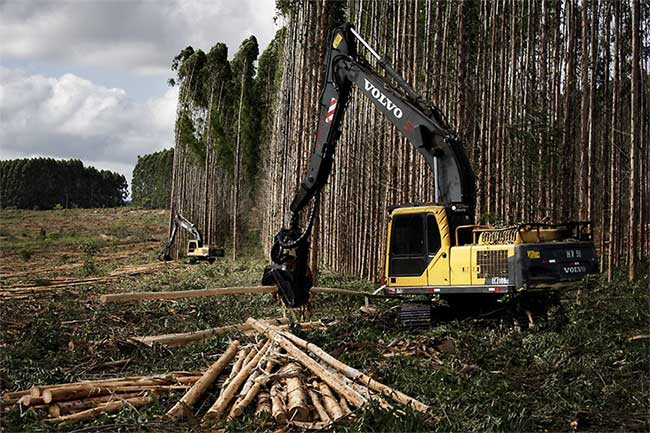How much paper can one produce from a tree?
"How much paper can be produced from a tree?" is a question many people ask but few have the answer. Because of this, there are thousands of papers in this world, but trees for paper production are not only one species: pine, bamboo, spruce, flax, cotton . enough.
It is difficult but it does not mean impossible. Holding up the pen and paper, doing some math together, we can also make it up.

In the past, people made paper from trees without wood.
The starting number
In the past, people made paper from non-woody plants like flax or hemp. But since the industry has risen to the throne, paper pulp is mostly made from woody plants, although some types of paper such as printing paper are still made from cotton.
According to Luciano Oliveira posted on Linkedin, the nature of wood is a natural synthetic material including cellulose, hemicellulose, lignin - natural oils in wood and wood extracts such as fatty acids, waxes and terpenes. . In it, only cellulose and hemicellulose are raw materials for paper production.

The nature of wood is a natural synthetic material including cellulose, hemicellulose, lignin .
The remaining components are separated, into black waste products called black liqour - or "black liquor" , and are often used as energy for paper mills too.
How much does a spruce plant contain about cellulose and hemicellulose?
An industrial forest in Brazil after 7 years will yield about 280m 3 of wood per 1ha. 1 ha is 10,000m2, the distance between trees will fall into 3 × 3 (m), so there will be 1100 x (10,000: 9) trees per 1 ha.
Taking the density of 7- 8 year old spruce wood that has been oven-dried and steam-free of 500kg / m 3 , each tree will have a volume of 280: 1100 = 0.25m3 and a volume of 500 × 0.25 = 126kg.
With 126kg of wood, we are approximately 96.8kg (126 × 76.8%) cellulose and hemicellulose.

Only cellulose and hemicellulose are materials for paper production.
Loss in pulp making process
Pulping - the process of making pulp is the process of turning wood into materials that can be cast into paper according to the parameters you want and the pulping method is not only one. In it, manual pulping is a popular method for producing ordinary A4 paper. The advantage of this method is to allow the removal of cellulose fibers at the highest temperature, while avoiding paper gold phenomenon.

Manual pulping is not 100% effective.
But besides, the big problem of manual pulping is productivity. Like other industrial processes, manual pulping is not 100% effective. Cellulose can somehow be "leaked" into black wine during separation, resulting in an average yield of only 57%.
That is, 126 kg of wood now has only 71.8 kg of pulp.
Finally comes the paper
A sheet of A4 paper with the size of 0.297m × 0.21m and taking the quantitative number (grammage) of 75g / m2, each sheet will have a weight of about 4.7g (0.297 × 0.21 × 75).
In fact, paper is also a synthetic material, in addition to cellulose, other additives are added to enhance certain properties. This may increase the total volume by 20% but we will not take that into account in this calculation.

We will produce about 15,277 sheets of A4 paper from a spruce.
So with 71.8 kg of pulp with a weight of about 4.7g each sheet, we will produce about 15277 sheets of A4 paper from a spruce.
Calculation may have certain errors, but the actual data is not much different.
- Wrapping paper into a plant-growing bag
- Video: Use millions of dollars in paper money to plant trees
- Recycled paper can be reused more than 80 times
- Biofuel tree in Cuba
- Toilet paper threatens the forest
- Invent for ink removal on paper for 5 minutes
- New paper antibacterial, waterproof
- 'Very good' tomato varieties produce tens of thousands of fruit per tree
- Why is toilet paper always white?
- Taiwan will produce paper from rice and wheat
- Interesting history of toilet paper
- Variable office waste paper into toilet paper
 'Fine laughs' - Scary and painful torture in ancient times
'Fine laughs' - Scary and painful torture in ancient times The sequence of numbers 142857 of the Egyptian pyramids is known as the strangest number in the world - Why?
The sequence of numbers 142857 of the Egyptian pyramids is known as the strangest number in the world - Why? History of the iron
History of the iron What is alum?
What is alum?